How to Invest in Art and Collectibles

A Comprehensive Guide on How to Invest in Art and Collectibles
Introduction:
How to invest in art and collectibles is an intriguing but potentially profitable endeavour that has captivated art enthusiasts and investors alike. Beyond the aesthetic pleasure, these assets have demonstrated their value and potential for significant returns over time. However, navigating the art market can be intimidating, especially for newcomers.
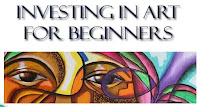

In this blog post, I’ll explore the world of art and collectibles investment, providing you with a comprehensive guide to help you get started. Whether you’re a passionate art lover or an investor seeking alternative opportunities, this blog will equip you with the knowledge and insights needed to make informed decisions and maximize your investment potential.
The Advantages of Investing in Art:
Investing in art offers a range of advantages that set it apart from traditional investment options. Firstly, art provides a tangible and visually appealing asset that offers intrinsic value beyond its financial worth. Additionally, art has the potential for capital appreciation, as the demand for established artists and significant works tends to increase over time. Moreover, art investments can also act as a hedge against inflation, diversify investment portfolios, and offer potential tax benefits. Understanding the advantages of art investment will provide you with a solid foundation and the confidence to approach this asset class with a long-term perspective.
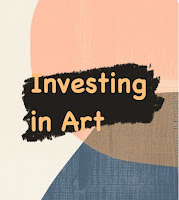
Building Your Collection: Where to Start?
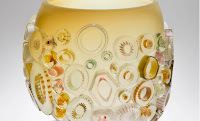
Embarking on an art and collectibles investment journey requires careful consideration of your investment goals and budget. Start by researching different art genres, artists, and styles that align with your interests. Visiting galleries, museums, and art fairs will help you gain a deeper understanding of the market and develop your personal taste. Begin your collection by starting small and gradually expanding as you gain experience and knowledge. Joining art communities, attending auctions, and working with art consultants or advisors can provide valuable insights and guidance. By engaging with the art world, you’ll be able to make informed decisions and build a collection that reflects your preferences and investment objectives.
Key Considerations for Art and Collectibles Investment:
Investing in art and collectibles requires careful attention to various factors.
(a) Firstly, thoroughly research the artist or item you’re interested in, considering their historical significance, market demand, and potential for future growth.

(b) Authenticity and provenance are paramount, so ensure that the artwork comes with proper documentation and verify its legitimacy.
(c) The condition and quality of the piece significantly influence its value, so inspect potential acquisitions meticulously and consult experts if necessary.

(d) Additionally, consider storage and insurance requirements to protect your investments.
(e) Staying updated on market trends, auction results, and economic factors that can impact the art market’s performance is crucial for making informed investment decisions.
Examples of High-Performing Art and Collectibles Investments
Examining successful art and collectibles investments can provide valuable insights and inspiration. Here are few notable examples:
#1. Jean-Michel Basquiat:

The works of this influential American artist have experienced significant recognition and value appreciation over time. In 2017, Basquiat’s piece “Untitled” sold for over $110 million at auction, making it one of the most expensive artworks ever sold. Basquiat’s meteoric rise in popularity showcases the potential for substantial returns on investments in renowned artists.
#2. Rare Coins:
The works of this influential American artist have experienced significant recognition and value appreciation over time. In 2017, Basquiat’s piece “Untitled” sold for over $110 million at auction, making it one of the most expensive artworks ever sold. Basquiat’s meteoric rise in popularity showcases the potential for substantial returns on investments in renowned artists.
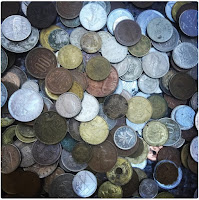
#3. Banksy:
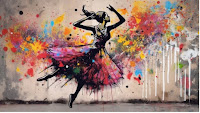
The anonymous street artist known as Banksy has gained international fame and has seen a surge in the value of his works. In 2019, his artwork titled “Devolved Parliament” sold for over £12 million, setting a new record for his auction sales. Banksy’s artworks have consistently attracted significant attention from collectors and investors alike, making him a notable artist to consider for potential investment.
#4. Classic Cars:
Collecting classic cars can be a profitable investment strategy. For instance, a 1962 Ferrari 250 GTO sold for a staggering $48.4 million in 2018, making it the most expensive car ever sold at auction. Classic cars with limited production numbers, iconic status, and historical significance tend to appreciate in value over time, making them attractive investments for enthusiasts and investors.

#5. Chinese Ceramics:
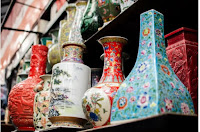
Chinese ceramics have a long and rich history and are highly sought after by collectors. For example, in 2017, a rare Ming Dynasty porcelain bowl known as the “Chicken Cup” was sold for over $36 million at auction. Chinese ceramics, especially those from esteemed kilns and periods, have shown consistent value appreciation, making them a lucrative investment option.
#6. Contemporary Photography:
Contemporary photography has gained prominence in recent years, attracting both art lovers and investors. For instance, the works of renowned photographer Andreas Gursky have achieved substantial prices at auction. His photograph “Rhein II” sold for over $4.3 million in 2011, setting a record as the most expensive photograph ever sold. Contemporary photography offers an accessible entry point into the art market and has the potential for significant returns.

These examples highlight the potential for substantial returns on investments in art and collectibles. However, it’s important to remember that successful investments require thorough research, expertise, and a long-term perspective.
Conclusion:
Investing in art and collectibles can provide not only financial potential but also a profound sense of fulfilment and appreciation for the beauty and cultural value they embody. By understanding the advantages of art investment, building a well-curated collection, considering key factors, learning from successful examples, and incorporating long-tail keywords to optimize your online presence, you can confidently navigate the art market. Whether you’re an experienced investor or a beginner, the tips and insights provided in this guide will empower you to embark on a successful journey of art and collectibles investment.
By immersing yourself in the world of art and collectibles, you’ll discover a realm of creativity, history, and potential financial growth. Start exploring, learning, and investing in these unique assets to witness the profound impact they can have on your portfolio.

Explore more Blogs at https://touchtheskyonline.com/ and also at https://mission-minded-mentors.blogspot.com/
